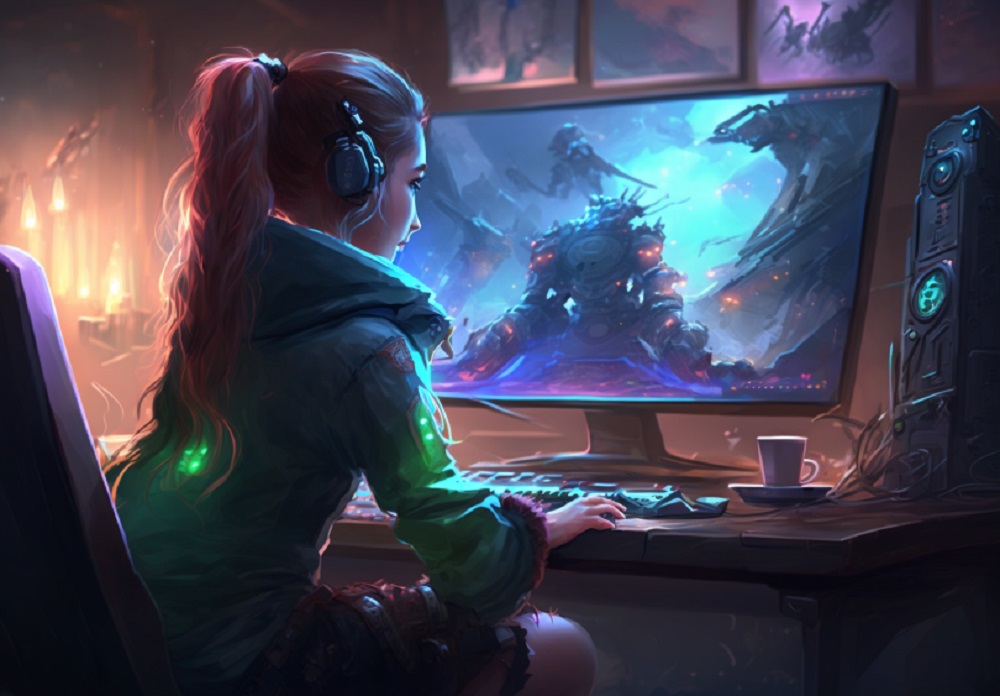Generative AI and Gaming: A Copyright

Generative AI and Gaming: A Copyright
The digital age has been marked by unprecedented advancements in technology. Among them, Artificial Intelligence (AI) stands out as a particularly transformative force. As we integrate AI into various sectors, we witness its enormous potential to reshape industries and redefine paradigms. One such paradigm is the use of generative AI in gaming. As exciting as the idea sounds—imagine a game that creates its own content—it also raises serious concerns. Most pressingly, it poses an imminent copyright crisis.
Understanding Generative AI
Generative AI, content can be created by models based on machine learning, such as Generative Adversarial Networks (GANs). After learning from vast datasets, these models can produce novel designs, stories, songs, and even digital art based on the training. The gaming industry will be able to build games that generate new levels, characters, and stories based on player actions in real-time.
The Gaming Revolution
Incorporating generative AI into games would make gaming revolutionary. Imagine an RPG where no two quests would be alike, or a strategy game where a player’s skill level would be constantly matched by a novel challenge. It would be possible to create unlimited, fresh content for Xbox Game Pass on the Gaming Industry without the need for constant developer updates. The AI can also adjust the game’s narrative direction based on the preferences of individual players. If the player prefers puzzle challenges, the AI could create more intricate puzzles.
The Copyright Conundrum
The above sounds appealing, but copyright infringement looms large. The models might inadvertently reproduce aspects of copyrighted games when they are trained on storylines, character designs, level layouts. Generative AI doesn’t “think” the way humans do. It amalgamates patterns from existing data. If the AI is trained on something similar, it might be able to replicate it.
Let’s delve into the potential scenarios
Direct Infringement: If a game’s AI generates a level strikingly similar to another game’s copyrighted level, it could be deemed a direct infringement. Even if it wasn’t intentional on the part of the developers, the law doesn’t always require intent for infringement.
By using generative AI in games, you may inadvertently create derivative works of other copyrighted content. If, for example, the AI creates characters that resemble famous protagonists from other games or storylines that are identical to existing copylefted narratives.
User-generated Content: Players might train the AI, intentionally or not, to produce copyrighted content. If a player consistently feeds the AI elements from another game, it might start generating content that infringes upon that game’s copyright.
Who’s to Blame?
The introduction of generative AI complicates accountability. If an AI unintentionally infringes on a copyright, who’s to blame? The game developers? The AI model developers? Or the players who influenced the AI’s generation?
As humans tend to create and therefore act as potential infringers, traditional copyright frameworks are not prepared for this. With AI, the line between creators and infringers blurs. Developers may not have any control over the AI’s generative process, making it hard to claim they intended to infringe.
International Complexity
In one country, there might be provisions for AI-generated content that indirectly address it, while in another it may not. Internationally released games, therefore, could be compliant in one jurisdiction and infringing in another. As a result of these international regulations, generative AI in games is even more complicated.
Moving Forward
Think differently about copyright laws: Update them to consider AI-generated content. Specific exceptions may be created for unintentional AI creations or a different threshold for infringement might be established.
A clear licensing agreement: Developers should make sure licensing agreements explicitly state the potential risks associated with AI-generated content.
Educate the players: As players are involved in shaping AI-generated content, they should know what the potential legal ramifications are.
Advanced AI Training: Improve AI models to better recognize and avoid potential infringements. Though challenging, it might help reduce unintentional similarities.
Conclusion
The generative AI revolution in gaming threatens to bring about a copyright crisis, but we can harness its full potential without getting mired in legal battles if we address these concerns proactively. It is important to balance innovation and responsibility when implementing many technologies.
